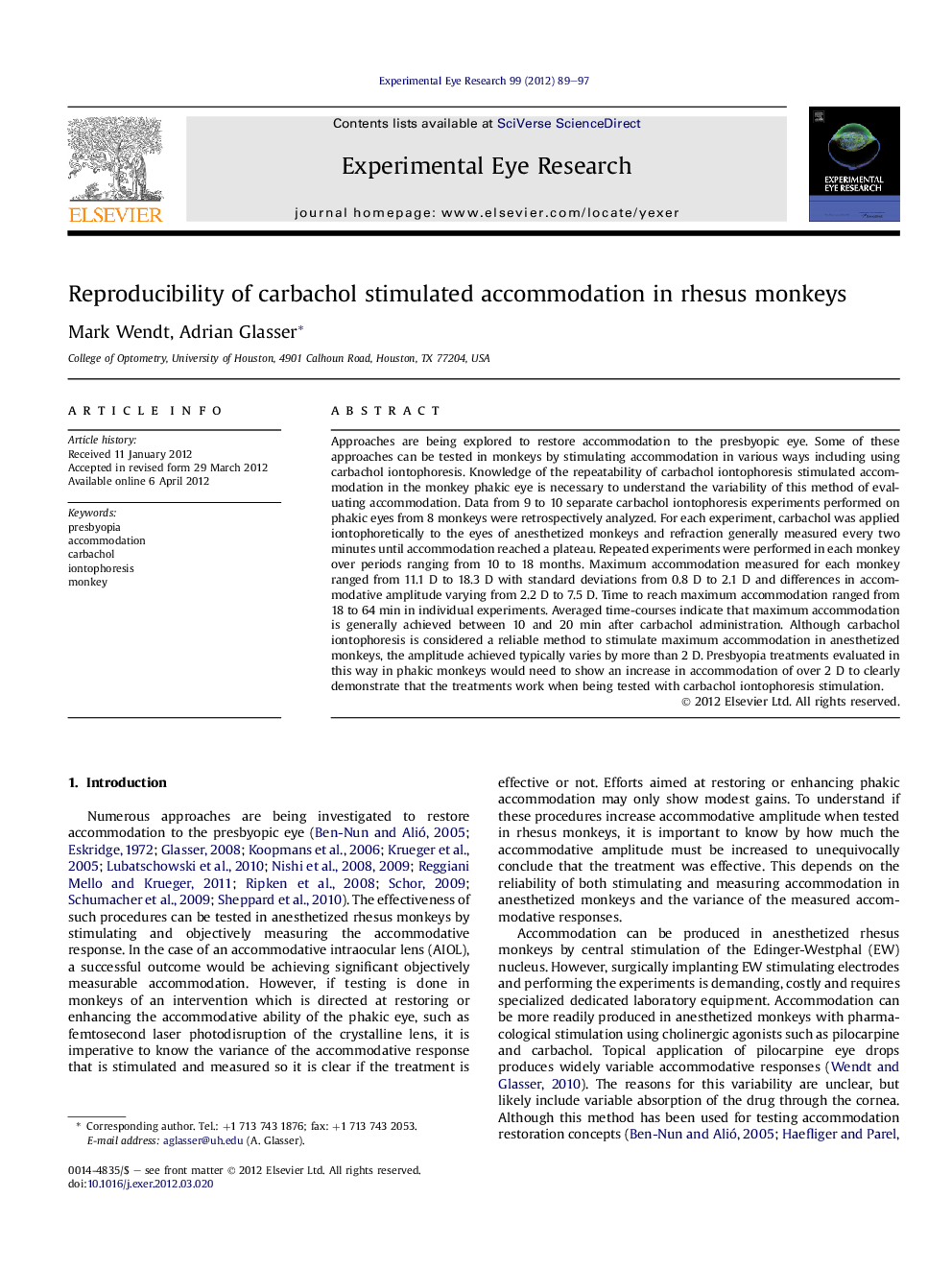| Article ID | Journal | Published Year | Pages | File Type |
|---|---|---|---|---|
| 4011428 | Experimental Eye Research | 2012 | 9 Pages |
Approaches are being explored to restore accommodation to the presbyopic eye. Some of these approaches can be tested in monkeys by stimulating accommodation in various ways including using carbachol iontophoresis. Knowledge of the repeatability of carbachol iontophoresis stimulated accommodation in the monkey phakic eye is necessary to understand the variability of this method of evaluating accommodation. Data from 9 to 10 separate carbachol iontophoresis experiments performed on phakic eyes from 8 monkeys were retrospectively analyzed. For each experiment, carbachol was applied iontophoretically to the eyes of anesthetized monkeys and refraction generally measured every two minutes until accommodation reached a plateau. Repeated experiments were performed in each monkey over periods ranging from 10 to 18 months. Maximum accommodation measured for each monkey ranged from 11.1 D to 18.3 D with standard deviations from 0.8 D to 2.1 D and differences in accommodative amplitude varying from 2.2 D to 7.5 D. Time to reach maximum accommodation ranged from 18 to 64 min in individual experiments. Averaged time-courses indicate that maximum accommodation is generally achieved between 10 and 20 min after carbachol administration. Although carbachol iontophoresis is considered a reliable method to stimulate maximum accommodation in anesthetized monkeys, the amplitude achieved typically varies by more than 2 D. Presbyopia treatments evaluated in this way in phakic monkeys would need to show an increase in accommodation of over 2 D to clearly demonstrate that the treatments work when being tested with carbachol iontophoresis stimulation.
► 9, 10 carbachol iontophoresis experiments performed on 8 monkeys. ► Refraction measured at regular intervals post-carbachol until asymptote reached. ► Accommodative standard deviations range between 0.8 D and 2.1 D. ► The precision of carbachol iontophoresis stimulated accommodation is limited.
